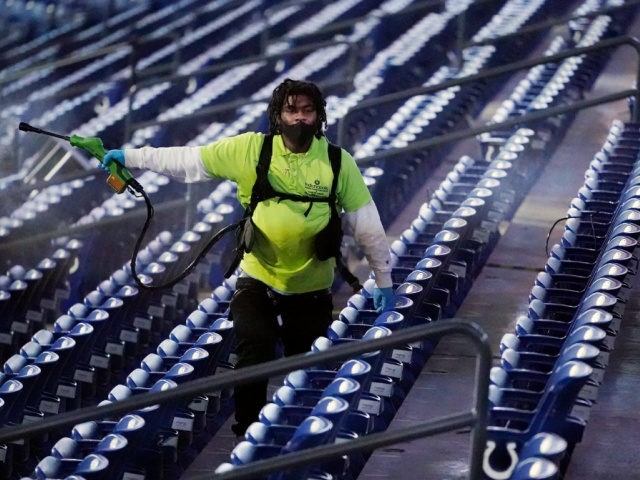The risk of contracting the Chinese coronavirus from a contaminated surface remains “low,” according to an April 5 science brief from the Centers for Disease Control and Prevention (CDC).
The brief recognizes the virus’s main mode of transmission as exposure via respiratory droplets and notes that, while it is possible for an individual to contract the virus through a contaminated surface, the risk remains “low.” Some studies suggest the risk of contracting the virus via a contaminated surface stands at less than 1-in-10,000.
“Because of the many factors affecting the efficiency of environmental transmission, the relative risk of fomite transmission of SARS-CoV-2 is considered low compared with direct contact, droplet transmission, or airborne transmission,” the brief states, noting it remains unclear how many infections are “acquired through surface transmission.”
Per the CDC:
There have been few reports of COVID-19 cases potentially attributed to fomite transmission 1,2. Infections can often be attributed to multiple transmission pathways. Fomite transmission is difficult to prove definitively, in part because respiratory transmission from asymptomatic people cannot be ruled out 3,4,5. Case reports indicate that SARS-CoV-2 is transmitted between people by touching surfaces an ill person has recently coughed or sneezed on, and then directly touching the mouth, nose, or eyes 3,4,5. Hand hygiene is a barrier to fomite transmission and has been associated with lower risk of infection 6.
Quantitative microbial risk assessment (QMRA) studies have been conducted to understand and characterize the relative risk of SARS-CoV-2 fomite transmission and evaluate the need for and effectiveness of prevention measures to reduce risk. Findings of these studies suggest that the risk of SARS-CoV-2 infection via the fomite transmission route is low, and generally less than 1 in 10,000, which means that each contact with a contaminated surface has less than a 1 in 10,000 chance of causing an infection 7,8,9.
The brief does not wholly dismiss the use of soap and detergent for disinfecting surfaces, explaining that it can, indeed, reduce the risk of “fomite transmission.” While it said surface disinfection appears to be effective for “preventing secondary transmission of SARS-CoV-2 between an infected person and other people within households,” the CDC notes there is “little scientific support for routine use of disinfectants in community settings, whether indoor or outdoor, to prevent SARS-CoV-2 transmission from fomites.”
“People can be infected with SARS-CoV-2 through contact with surfaces. However, based on available epidemiological data and studies of environmental transmission factors, surface transmission is not the main route by which SARS-CoV-2 spreads, and the risk is considered to be low,” the conclusion reads.
The brief follows a year of health officials placing an emphasis on virus protocols, including the rigorous cleaning of shared surfaces.
In February, the CDC updated its guidance to include adding “layers of material” to masks, effectively endorsing the concept of double-masking.

COMMENTS
Please let us know if you're having issues with commenting.